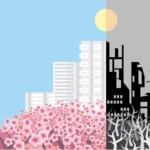Hoaxes: Literature as a threat and an antidote
The latest issue of the magazine La revista de Occidente includes the translation of an article by Peter Galison entitled “The journalist, the scientist and objectivity.” It describes the ease with which images are manipulated in today´s world. This has caused publications such as Science magazine to create protocols to prevent the presentation of manipulated illustrations. The perversion of information also reaches the world of journalism, where false rumors are propagated with a singular force.

It´s naive to think that Artificial Intelligence will save us from these ills. Among those who says so is Tom Simonite, in an article published in Wired. Being able to dismantle the flow of unfounded news stories is impossible, even for an algorithm. Because dissolving the flow of lies implies not only stopping them, but knowing how to recognize them. Simonite debates the ideals of the Fake News Challenge, which explores the possibilities of Machine Learning to confront digital hoaxes.
The prevention of falsehoods is not a novelty. The search for true information is one of the keys to the development of modern journalism. But the expansive speed of current hoaxes has no comparison in history. According to a study by the University of Budapest cited in the MIT Technology Review the distribution patterns of videos that go viral are similar to those of the ancient pandemics, such as the black plague. But will present-day readers, particularly those who work with and depend on information, be able to discern them?
The search for truth should be supplemented with craftiness, in order to avoid crude myths or clichés. One of the oldest hoaxes -the one that gave origin to literature, according to Nobel laureate Vladimir Nabokov- is that of Peter and the Wolf. The dividing line between between and story and deception marks the difference between literature and “post-truth.” Digital interconnection has brought a new type of textuality that can make that line disappear. The new Peters have diverse interests; their objectives are monetary or strategic; or at times, simply enjoyment. This is not unprecedented, because Plato in Book III of The Republic accused certain poets of confusing children and gullible people with unhealthy fictions.
Orson Welles warned about this dynamic in that memorable radio program, The War of the Worlds. The better the quality of literary artifice, the more powerful it will be. Fortunately the majority of the great writers don´t want to harm their readers. Their intention, in spite of being fantastic, recreates what exists in a different space. There, they will experiment with real material to transform it, mix it and play with its possibilities. In that transference, the reader that has not lost his/her sanity like Alonso Quijano, will be able to distinguish fiction from hoax. In La verdad de las mentiras (The Truth About Lies), Mario Vargas Llosa says “Every good novel tells the truth and every bad novel lies.” According to the Spanish-Peruvian author, the difference between a Popperian open society and a closed society is the clear distinction between literary fiction and historical truth.
Critical capacity is constructed from contact with scientific texts but also from contact with literature. Novels, for example, help us to understand the structures of what is plausible, those intricacies of what has happened or could happen. And thanks to them, we know that life has complexities that are difficult to imagine. That´s how we complement our experience. Shana Lebowitz pointed out a few years ago, in an article in Business Insider, how some novels develop skills in business people. On her list, there are texts such as Something Happened, by Joseph Heller, or A Hologram for the King, by Dave Eggers, but also classics such as Don Quixote, Moby Dick or The Lord of the Flies. To these, I would add Stevenson´s Treasure Island or The Player by Dostoevsky. The current tradition of black novel authors such as Charles Cumming and Don Winslow, can also help save us from naiveté.
It´s curious that in order to circumvent the lies, one must be trained in critical reading, but it´s even more important to read publications with credible filters. Initiatives such as Wikitribune attempt to solve this by means of collaboration and open code. The hoaxes are increasingly sophisticated and believable. Surely they will challenge the algorithms and codes they come up against, but they will not be able to beat an astute and wary press. This comment was made some months ago by David Remick in an interview in XLSemanal. The tradition of The New Yorker has protected and strengthened an essential weapon: the verification of sources. If we don´t dedicate resources to this, the opposing forces will tend to falsify information. Beyond the traditional media, many companies and institutions already have areas devoted to providing solid information for their clients. Because access to quality content provides safety for everyone.
At the end of June, the Reuters Institure and Oxford University presented a report on digital journalism. The study confirmed that falsehoods and rumors have more influence at the present time. That´s why the ability to detect deception in the cloud will depend on our capacity for prevention. If pedagogy assumed from its beginnings that it had to confront the dangers of the street, now it must also face the challenge of circumventing the dangers of social media. Apart from literature, the financial republic will also have to attend to the data that come from sociology, psychology and ethics. The failure of projects with a formidable statistical apparatus, but little acumen for confronting other risks will be a common occurrence if we are not warned about stories such as that of Peter and the Wolf.